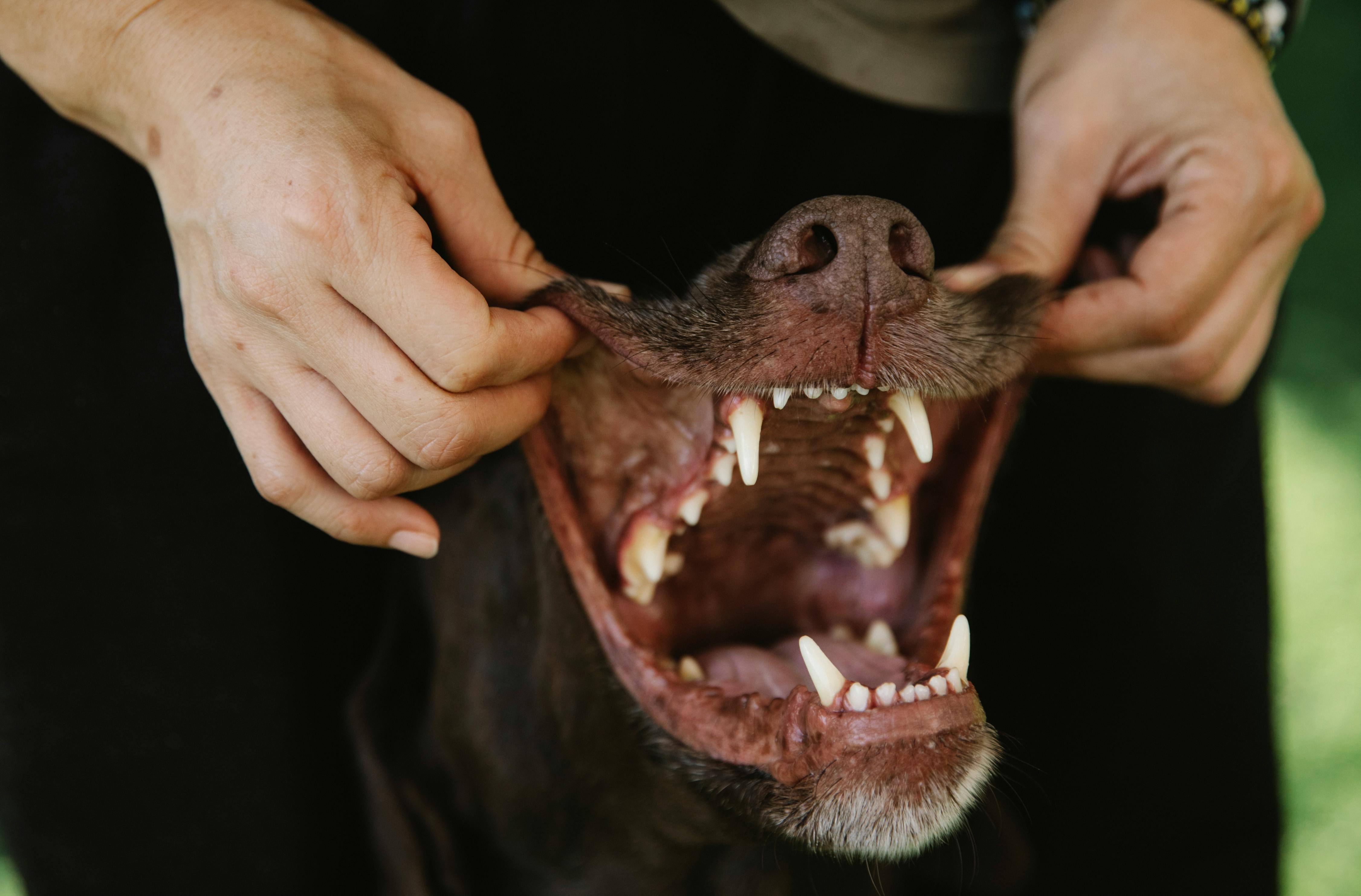Oral Melanoma in Dogs

Many dog owners may be unaware that their beloved pets' mouths can be the hiding place for a prevalent and life-threatening ailment: Oral Melanoma.
Routine dental cleanings serve a dual purpose, preserving a dog's dazzling smile and offering veterinarians the opportunity to perform a comprehensive examination of the mouth. This examination helps spot unusual pigmentation and subtle tumors that may indicate the presence of oral cancer, including oral melanoma. Detecting melanoma in its earliest stages offers the best chances for your pet's survival.
Symptoms of Oral Cancer
Symptoms of oral cancer often overlap with dental disease, including:
-
Bad breath
-
Excessive drooling
-
Bleeding from the mouth
-
Swelling of the face
-
Change in food preference (from hard kibble to soft food)
-
Alterations in chewing habits
-
Reduced appetite
-
Persistent coughing
-
Difficulty in swallowing
-
Weight loss
Diagnosing Oral Melanoma in Dogs
Oral melanomas primarily affect older dogs and manifest as darkly pigmented areas in the mouth, tongue, and gums. Cats can also develop oral melanoma, but different types of oral tumors are more common in felines.
During a dental examination, veterinarians thoroughly inspect the mouth for broken teeth, swollen gums, or any anomalies. They conduct this examination much like a dentist would.
Oral melanoma and other oral cancers can present as pigmented or non-pigmented fleshy masses anywhere in the mouth.
To definitively diagnose an oral tumor or cancer, your veterinarian will examine your dog's mouth and conduct a biopsy of the affected tissue. This biopsy will determine whether the growth or tumor is benign, pre-cancerous, or malignant. The biopsy is then sent to a pathologist for defining the type of cancer, and an oncologist assesses the stage of the cancer.
Additional diagnostic tests, such as chest X-rays, blood work, and jaw X-rays or CT scans, help determine whether the cancer has invaded the jawbone or metastasized to the lungs.
Treating Oral Melanoma
Oral melanoma is treatable, but complete removal of the cancer is challenging, often requiring the removal of part of the dog's jaw. Unfortunately, malignant oral tumors have a high recurrence rate and often metastasize.
The extent of the cancer is a crucial factor in determining the most suitable treatment. To treat melanoma aggressively, oncologists surgically remove as much of the tumor as possible, including any cancerous bone growth. Radiation therapy is then used to target the affected area to reduce the risk of recurrence. Given the high likelihood of recurrence and rapid metastasis, chemotherapy and/or immunotherapy may also be recommended.
The average lifespan of dogs following a malignant melanoma diagnosis ranges from five to eight months. Many malignant tumors metastasize in the early stages, spreading to the lungs, lymph nodes, and other organs.
Oral Melanoma Vaccine
While a new DNA-based vaccine for oral melanoma has shown promise in improving a dog's survival rate, it does not prevent the disease from occurring. The vaccine supports the pet's immune system but does not act as a preventive measure.
In March 2007, the Canine Melanoma Vaccine DNA was conditionally approved by the U.S. Department of Agriculture. During initial trials, many dogs survived for an average of 389 days, a considerable improvement over the typical five to eight months. The vaccine is used in conjunction with other treatments, such as radiation, and is typically recommended for dogs with stage II or stage III oral melanoma.
Making Informed Choices
Pet owners are encouraged to discuss treatment options with their veterinarians, considering the pet's quality of life. If the treatment is more challenging than the disease, particularly for senior pets with compromised immune systems, alternative options may be considered.
While there is no preventive care for malignant melanoma, routine dental checkups and thorough oral examinations can significantly contribute to early detection and diagnosis of oral cancers, potentially saving your pet's life.
Get insurance plans with wide-ranging coverage options













